Design a Gorgeous Garden With Colorful Flowers
Updated: Apr. 04, 2023
Pairing colorful flowers for great contrast works well in the garden. Plant the right hues to create a warm and inviting backyard space.
Sponsored By: Dutch Grown
A portion of this piece was created in partnership with Dutch Grown, an online flower bulb retailer with four generations of Holland tulip experience.
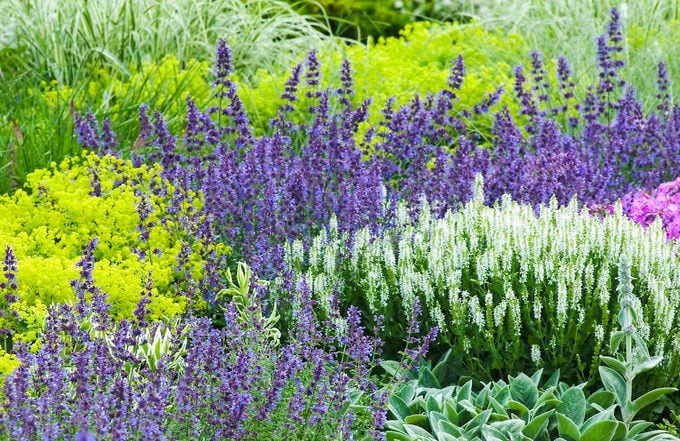
Visitors will experience a garden differently depending on what color scheme the flowers and foliage create. They may find it tranquil or invigorating, simply because of how the garden’s colors work together. Wildlife visitors are drawn to colorful flowers, too. With the right hues, you can invite birds, butterflies and more to your backyard. Ready for your lesson in garden color? Let’s begin!
Check out the top 15 colorful hummingbird flowers to grow.
Classic Colors: Purple, Pink and Blue Flowers
Blues, purples and pinks are favorites for gardeners. For some beautiful purple and blue flower options, look to lavender, campanulas, salvia and lupines. Equally nice are pink blooms like coneflowers, cosmos, dahlias and hollyhocks. Don’t overdo it, though. Colorful flowers in the purple, pink and blue color range give the garden a lovely watercolor look,. This can have a very peaceful and relaxing effect on visitors strolling along the garden path. However, stand back 10 feet or more from the garden, and it’s a completely different effect. The colors tend to blend together so well that the garden loses much of its definition. Onlookers will see only a bluish or pinkish blur.
Hollyhock
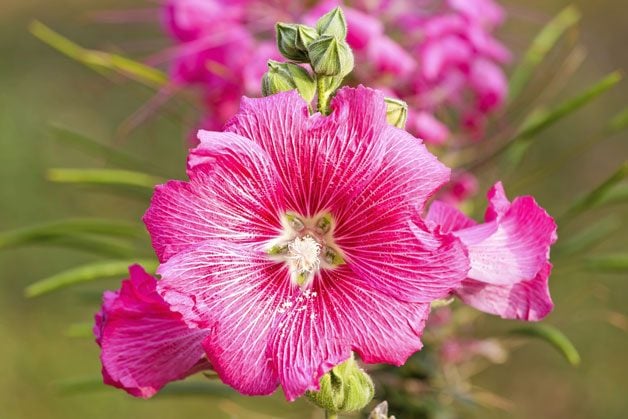
Dahlia
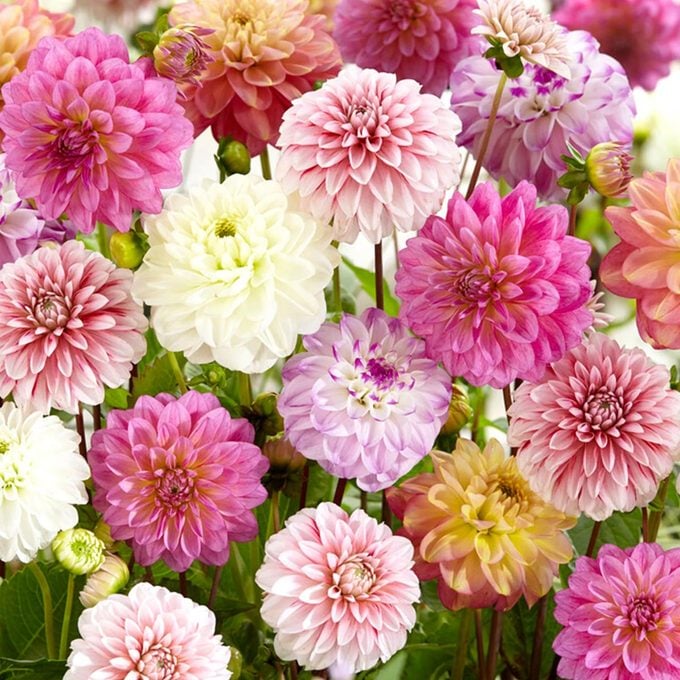
Sponsored

Catmint
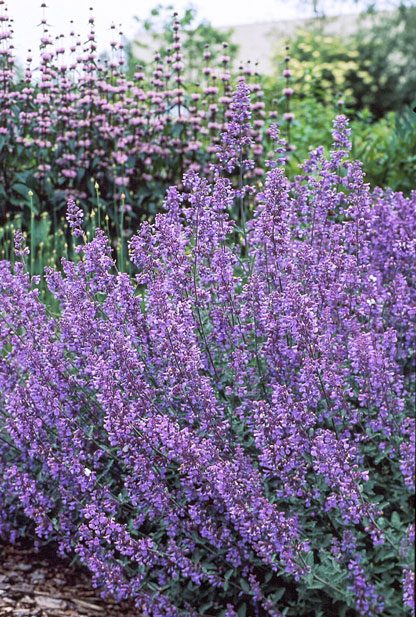
Verbena
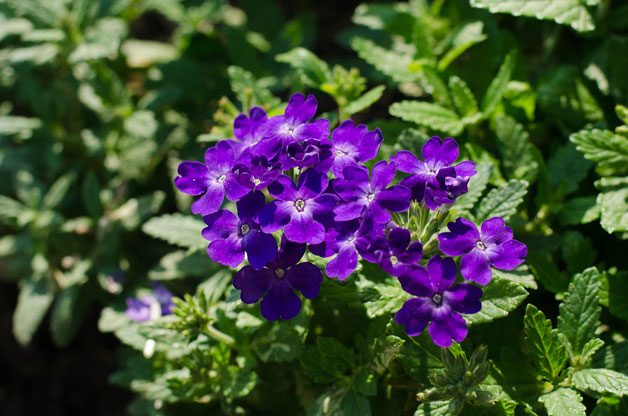
Yarrow
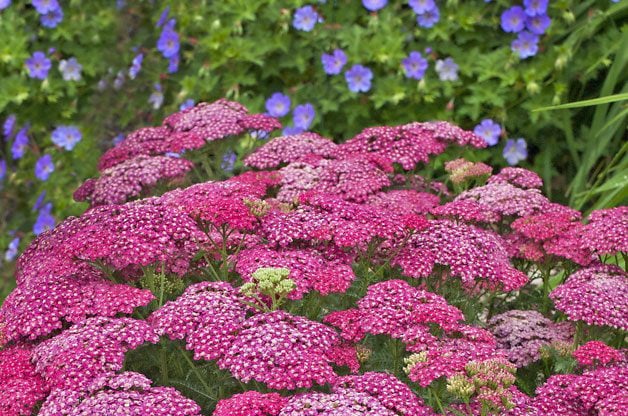
Rosemary
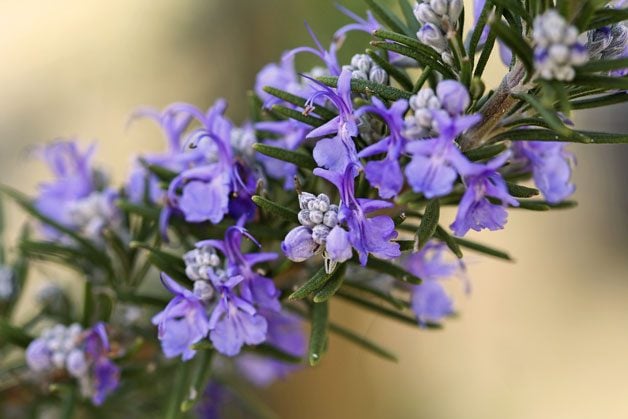
Rhododendron
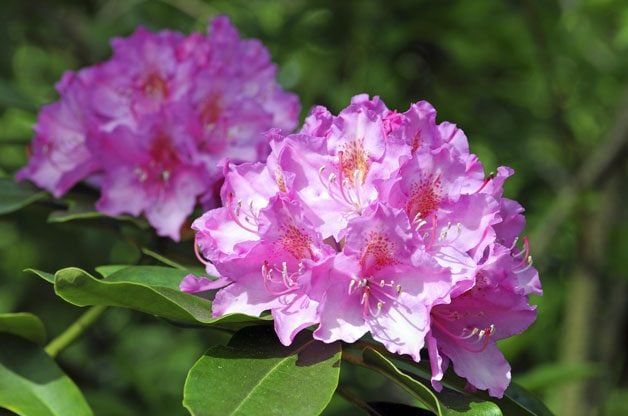
Contrasting Colors: Yellow, Orange and Red Flowers
To break up your pink, blue and purple flowers, you’ll want to look to the next color grouping—oranges, reds and yellows. These shades create an atmosphere that is invigorating, uplifting and feisty! Choosing colorful flowers like black-eyed Susans, poppies, zinnias and Mexican sunflowers will make you feel happy and energized in no time.
Many of those warm-colored flowers will also welcome pollinators and birds to the garden. For example, butterflies can’t resist the bright blooms of sunflowers and butterfly weed. Nearly every red tubular flower, like penstemon or salvia, will attract hummingbirds. Mexican sunflower seeds are irresistible to goldfinches and other seedeaters. Do hummingbirds like sunflowers?
Black-Eyed Susan
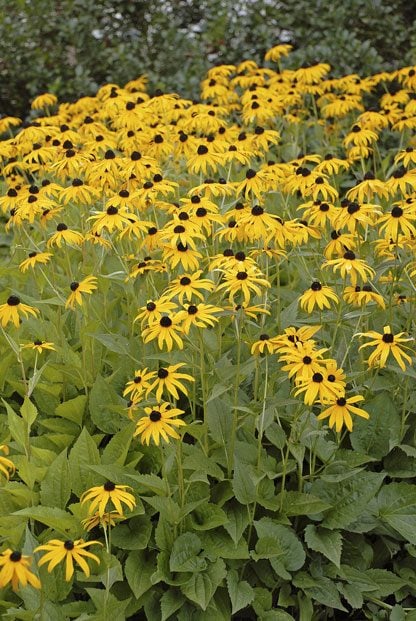
Butterfly Weed
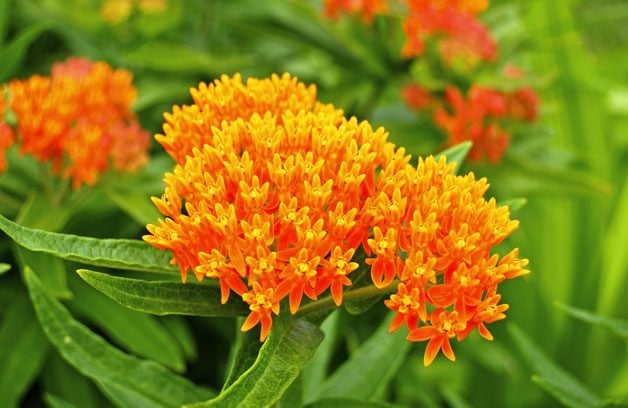
Goldenrod
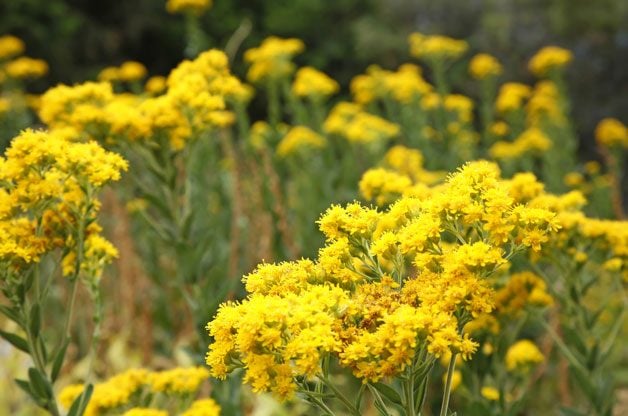
Rue
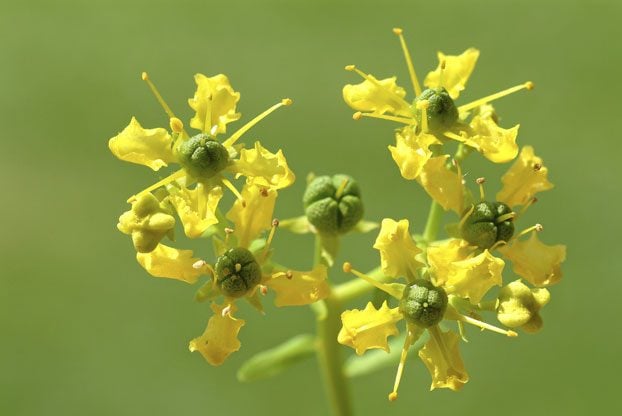
Calendula
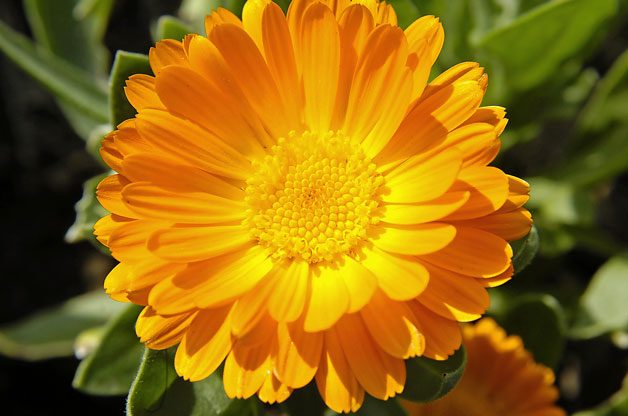
The No Color Rule: White Flowers
You might not think of white as a colorful flower garden staple, but they are. Including enough white flowering plants is an important aspect in planning any garden. Strive for a garden that has 30 percent of its plants fall in this category.
White flowers brighten up the garden, giving it a fresh look. This is especially important in the heat of summer or at the end of the season when the garden begins to take on a tired look. If you have some white baby’s breath or chamomile planted throughout the garden, their white blooms will add a cheerful touch.
Along with other colors, white flowers also attract plenty of beneficial insects. Ladybugs, lacewings, and hoverflies hunt pests like aphids and are just a few of the helpful insects you can expect to find in your garden. Having abundance of these insects in the garden translates to a garden mostly free of pests, so you don’t need pesticides.
Alyssum
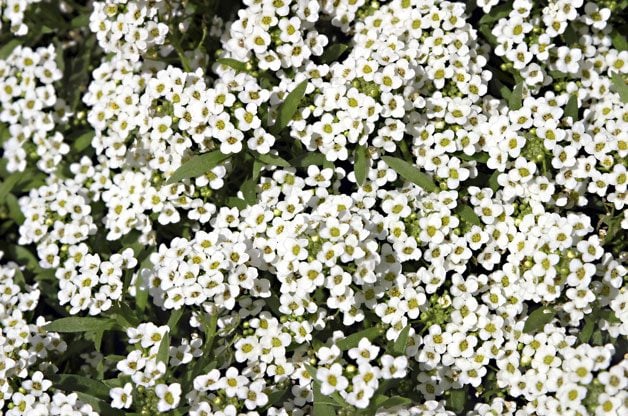
Phlox
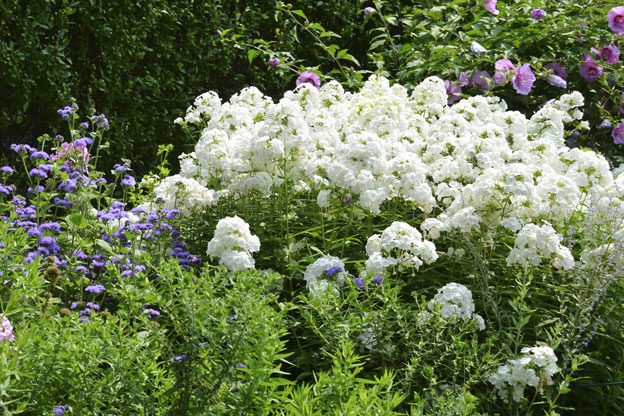
Shasta Daisy
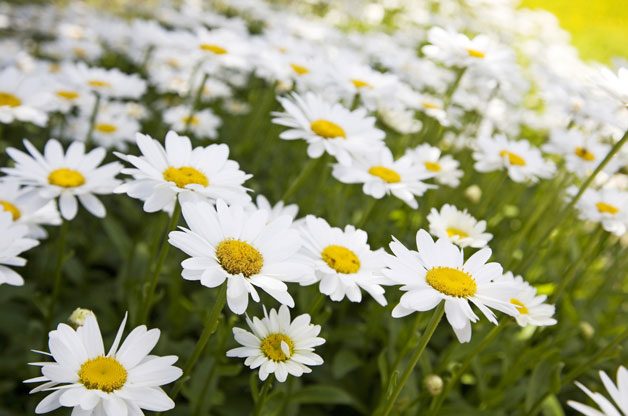
Don’t Forget Foliage: Silver and Gray
Finally, embrace color and texture in any garden by taking advantage of different types of foliage. There are many interesting shades of green and gold foliage, as well as purple and red in plants like red rubin basil or shiso. The endless varieties of shapes and textures of the leaves will keep any garden visitor interested in the landscape.
Throw woolly lamb’s ears, helichrysum and gray santolina in the mix, because all of them have silver-gray foliage. Bronze fennel, with bronzy green foliage and yellow flowers, is a tall plant making an attractive statement wherever it grows. Check out the top 15 colorful coleus varieties to grow.
There’s the fine foliage of fountain grass and the leathery feel to tulip or iris leaves. All of these plants create interest, complement flowers and make the garden a true place of beauty.
Variegated foliage is nearly a whole garden world by itself, with a great many variegated thymes, dianthus, oreganos and more. Use a bit of care with some golden variegations in foliage, though. They sometimes clash if planted next to chartreuse or bright pink flowers. Intermixing variegated foliage with rich solid leaf colors of any shade will make your garden look stunning.
Helichrysum
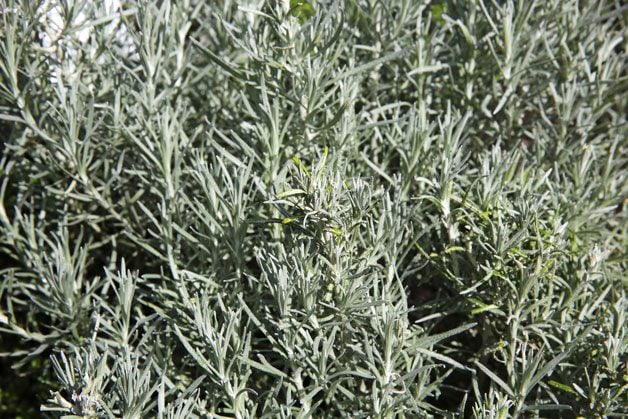
Gray Santolina
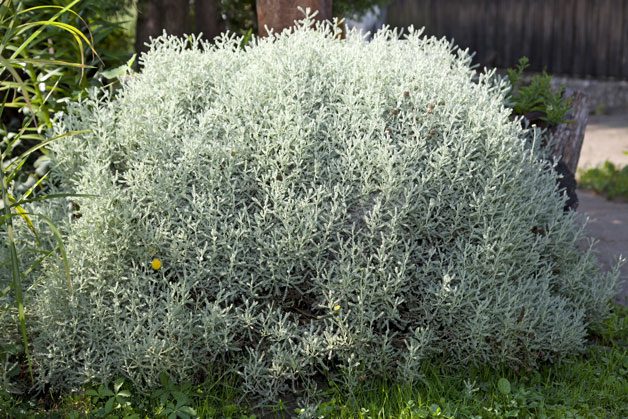
Wooly Lamb’s Ears
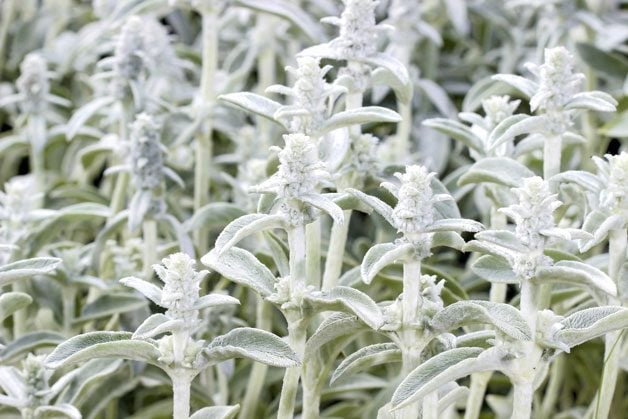
Next, discover 10 secrets to fantastic fall leaf colors in your yard.



















